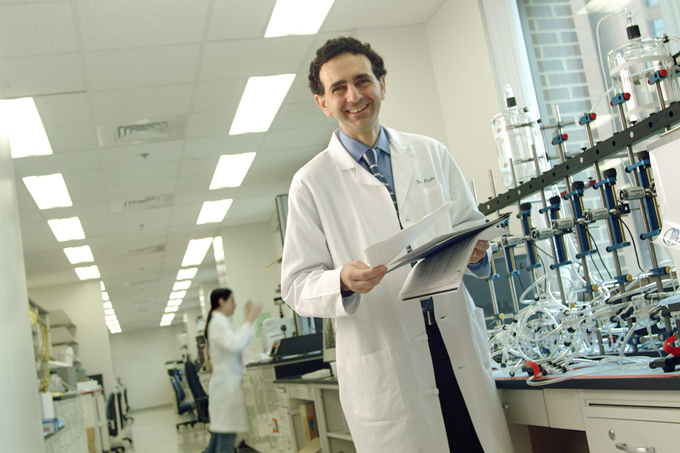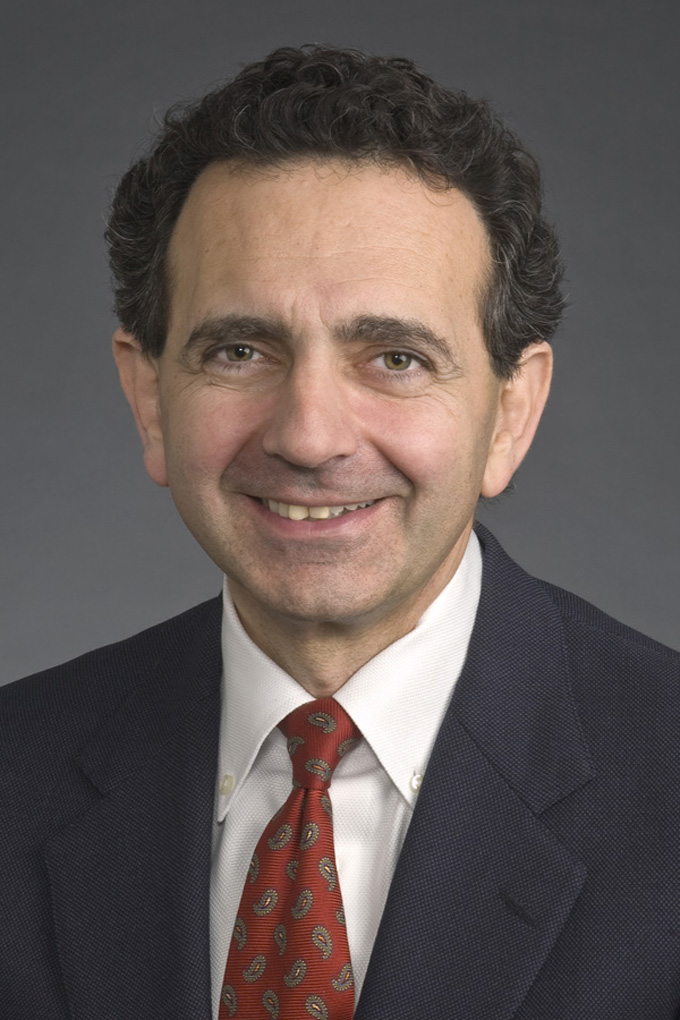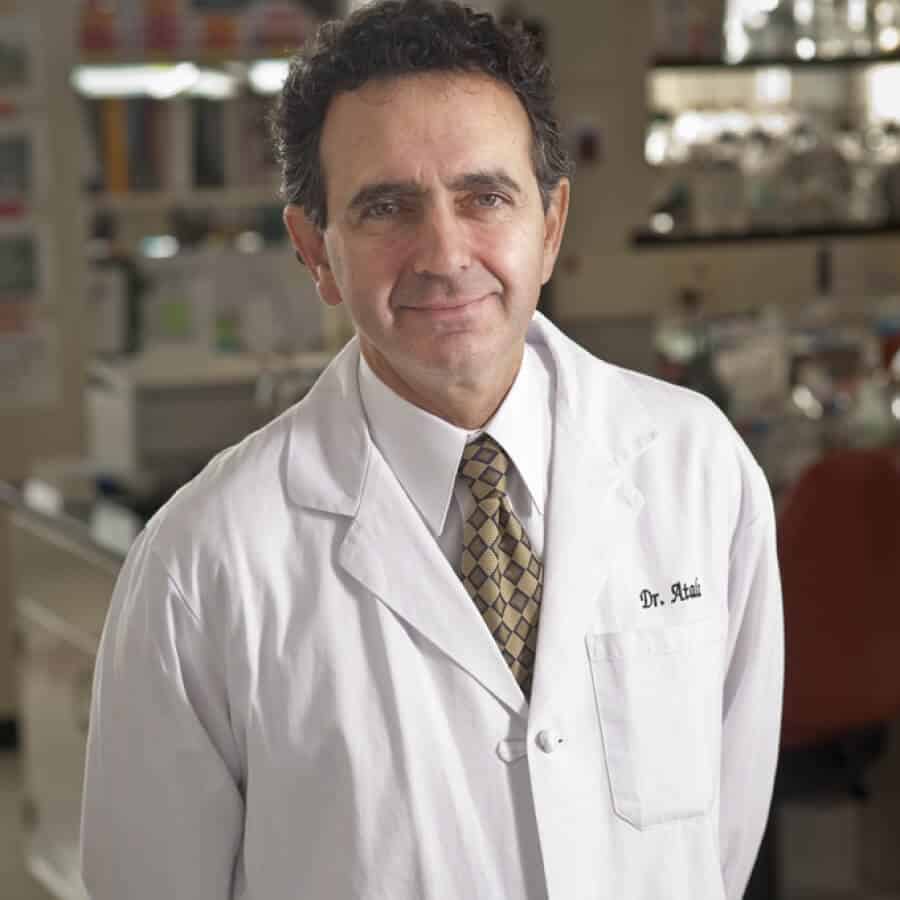Anthony Atala, M.D, is the Director of the Wake Forest Institute for Regenerative Medicine and is the W. Boyce Professor and Chair of Urology at the Wake Forest School of Medicine. Dr. Atala is a practicing surgeon and a researcher in the area of regenerative medicine. His work focuses on growing human cells, tissues, and organs.
Dr. Atala was elected to the Institute of Medicine of the National Academy of Sciences in 2011, to the National Academy of Inventors as a Charter Fellow in 2013, and to the American Institute for Medical and Biological Engineering in 2016. He is a recipient of many awards, including the U.S. Congress-funded Christopher Columbus Foundation Award, bestowed on a living American who is currently working on a discovery that will significantly affect society; the World Technology Award in Health and Medicine, presented to individuals achieving significant and lasting progress; the 2016 Smithsonian Ingenuity Award; and the R&D 2016 Innovator of the Year Award for his work with bio-printing.
Dr. Atala’s work has also been covered in the lay press. In 2003 he was named by Scientific American as a Medical Treatments Leader of the Year. Dr. Atala’s work was listed among Time Magazine’s top 10 medical breakthroughs of the year, and as Discover Magazine`s Number 1 Top Medical Science Story of the Year in 2007. In 2009 Dr. Atala was featured in U.S. News & World Report as one of 14 Pioneers of Medical Progress in the 21st Century, and his work in 2010 was listed by Smithsonian Magazine as one of 40 things to know about the next 40 years. Dr. Atala’s work was listed in the Huffington post as one of 18 great ideas of 2011, in Time Magazine as one of the top 5 medical breakthroughs of the year in 2011, by Time Magazine as one of five discoveries that will change the future of organ transplants in 2013. The American Association of Retired Persons named him one of the 50 influential people who will make life better in 2012 while Scientific American listed him as one of the world’s most influential people in biotechnology in 2015. The Fast Company named Dr. Atala an Innovation by Design Awardee in 2016.

Prof. Anthony Atala in laboratory
Would you like to tell our readers about regenerative medicine in layperson’s terms?
To many people, the idea of growing replacement body parts in the lab sounds like modern-day science fiction. People are often surprised to learn that this notion of harnessing the body’s natural regenerative powers isn’t new. In fact, American aviator Charles Lindbergh did research in this area back in the 1930s in hopes of finding a solution for his ailing sister-in-law. The idea has endured because of the desperate need for replacement organs. Every 30 seconds, a patient dies from diseases that could be treated with organ or tissue replacement.
Today, regenerative medicine is becoming science fact. In the area of cell therapies, advances include reports of cardiac stem cells being able to improve heart function in a small group of patients with heart failure. In the area of tissue engineering – or growing organs in the lab – skin, cartilage, bladders, urine tubes, trachea and blood vessels have all been engineered outside the human body and implanted in patients. While these advances are currently helping small groups of patients through clinical trials, the goal of regenerative medicine scientists is to expand the applications of regenerative medicine to a wider range of diseases and also to larger groups of patients.
Tell us about the progress you’ve made in stem cell technology and bio-printing of organs.
Stem cells are “master” cells that can be coaxed to become particular cell types. Our team has identified stem cells in placenta (afterbirth) and amniotic fluid. The potential in regenerative medicine is to use stem cell therapies to restore function and to engineer replacement tissues and organs.
There have been significant advances in bio-printing technology.
Our team is conducting research projects to print bone, muscle and cartilage (ear and nose), as well as a long-term project to print a human kidney. All of this work is still experimental and not yet ready for patients. In addition, we’ve are embarking on a research project to print organ-like structures on a chip system (news release attached). This system would be used to study the effects of chemical and biologic weapons on the body. This “body on a chip” will also be used to speed up the development of antidotes to these weapons. This system is expected to be faster and more accurate than testing in animals.
Today’s printers offer the opportunity to very precisely combine cells and materials into the desired shape. The printers we’ve designed give us the option of using two or more different cell types and placing them exactly where they need to be. 3D printers also have the flexibility of using a variety of biomaterials so that cells can be printed in either gel-like or rigid scaffolds, or printed without scaffolds. Another option is to print the structures without cells. The printers can also incorporate proteins, growth factors, and other liquids into the structures to help promote regeneration once implanted.
How far are we from the day when most organs can be bio-printed and those in desperate need would not have to wait for donors?
In science it is never easy to predict how soon a new technology will become clinically available to patients. Our research using the Integrated Tissue and Organ Printing System indicates that structures printed with the system have the right size, strength and function for use in humans. Future development of the system is being directed at the production of tissues for human applications. Our research indicates the feasibility of printing bone, muscle and cartilage for patients, and we plan to use similar strategies to print solid organs.
 Prof. Anthony Atala
Prof. Anthony Atala
What was your motivation to become a scientist, and at what age did you decide that regenerative medicine was your calling?
When I was a young boy, I was interested in science and we had a family doctor who made house calls, so he made an impression on me. As I initially pursued medicine, I never even considered research. In fact, I had to be talked into doing a research fellowship after I finished my medical training. Yet once I started on that path, I realized I didn’t want to turn back. Research has been an important part of my career and life ever since. What excites me about the regenerative medicine field is the potential to cure certain diseases, rather than merely to treat symptoms.”
What are the other projects you are working on?
We are working on developing replacement organs and tissues, as well as healing cell therapies, for more than 30 different areas of the body. Projects range from blood vessels and kidneys to cell therapies for lung disease and hemophilia. We are pursuing multiple strategies, including 3D printing, to move our projects forward to meet our ultimate goal – making patients better.
Please tell us about those individuals who spurred you on to reach your current goals?
My patients inspire me every day as well as my fellow scientists and researchers with the work they do to help us achieve our goal of creating new technologies that will ultimately help improve patients’ lives.
When you are not working, what do you like to indulge in?
When I’m not working, I enjoy time with my family. I also enjoy reading biographies, history, and keeping up with all types of science.
Photos: Archive of Dr. Atala
Support us!
All your donations will be used to pay the magazine’s journalists and to support the ongoing costs of maintaining the site.
Share this post
Interested in co-operating with us?
We are open to co-operation from writers and businesses alike. You can reach us on our email at [email protected]/[email protected] and we will get back to you as quick as we can.









